Debes estar logueado
-
moreX
-
Componentes
-
-
Category
-
Semiconductores
- Diodos
- Tiristores
-
Módulos con aislamiento eléctrico
- Módulos con aislamiento eléctrico | VISHAY (IR)
- Módulos con aislamiento eléctrico | INFINEON (EUPEC)
- Módulos con aislamiento eléctrico | Semikron
- Módulos con aislamiento eléctrico | POWEREX
- Módulos con aislamiento eléctrico | IXYS
- Módulos con aislamiento eléctrico | POSEICO
- Módulos con aislamiento eléctrico | ABB
- Módulos con aislamiento eléctrico | TECHSEM
- Go to the subcategory
- Rectificadores de puente
-
Transistores
- Transistores | GeneSiC
- Módulos SiC MOSFET | Mitsubishi
- Módulos SiC MOSFET | STARPOWER
- Módulos ABB SiC MOSFET
- Módulos IGBT | MITSUBISHI
- Módulos de transistores | MITSUBISHI
- Módulos MOSFET | MITSUBISHI
- Módulos de transistores | ABB
- Módulos IGBT | POWEREX
- Módulos IGBT | INFINEON (EUPEC)
- Elementos semiconductores de carburo de silicio (SiC)
- Go to the subcategory
- Controladores de puerta
- Bloques de energía
- Go to the subcategory
- Convertidores de corriente y tensión LEM
-
Componentes pasivos (condensadores, resistencias, fusibles, filtros)
- Resistencias
-
Fusibles
- Fusibles miniatura para circuitos electrónicos, serie ABC y AGC
- Fusibles tubulares de acción rápida
- Eslabones fusibles de retardo de tiempo con características GL / GG y AM
- Eslabones fusibles ultrarrápidos
- Fusibles de acción rápida (estándar británico y estadounidense)
- Fusibles de acción rápida (estándar europeo)
- Fusibles de tracción
- Eslabones fusibles de alto voltaje
- Go to the subcategory
-
Condensadores
- Condensadores de motor
- Condensadores electrolíticos
- Condensadores de película
- Condensadores de potencia
- Condensadores para circuitos de CC
- Condensadores de corrección del factor de potencia
- Condensadores de alto voltaje
- Condensadores de calentamiento por inducción
- Condensadores de almacenamiento de energía y pulsos
- Condensadores de ENLACE CC
- Condensadores para circuitos AC/DC
- Go to the subcategory
- Filtros EMI
- Supercondensadores
-
Protección contra sobretensiones
- Protección contra sobretensiones para aplicaciones coaxiales
- Protección contra sobretensiones para sistemas de videovigilancia
- Protección contra sobretensiones para cableado de potencia
- Pararrayos para LED
- Descargadores de sobretensiones para energía fotovoltaica
- Protección del sistema de pesaje
- Protección contra sobretensiones para Fieldbus
- Go to the subcategory
- Go to the subcategory
-
Relés y contactores
- Teoría de relés y contactores
- Relés semiconductores de CA trifásicos
- Relés semiconductores de CA trifásicos
- Reguladores, controles y accesorios
- Arranques suaves y contactores de inversión
- Relés electromecánicos
- Contactores
- Interruptores giratorios
-
Relés semiconductores de CA monofásicos
- Relés semiconductores CA monofásicos, serie 1 | D2425 | D2450
- Relés semiconductores CA monofásicos, series CWA y CWD
- Relés semiconductores CA monofásicos de las series CMRA y CMRD
- Relés semiconductores de CA monofásicos, serie PS
- Relés semiconductores de CA dobles y cuádruples, serie D24 D, TD24 Q, H12D48 D
- Relés de estado sólido monofásicos, serie gn
- Relés semiconductores de ca monofásicos, serie ckr
- Relés AC monofásicos SERIE ERDA Y ERAA para carril DIN
- Relés AC monofásicos para corriente 150A
- Relés dobles de estado sólido integrados con disipador de calor para carril DIN
- Go to the subcategory
- Relés semiconductores CA monofásicos para PCB
- Relés de interfaz
- Go to the subcategory
- Núcleos y otros componentes inductivos
- Radiadores, varistores, protecciones térmicas
- Aficionados
- Aire Acondicionado, Accesorios para Armarios Eléctricos, Neveras
-
Baterías, cargadores, fuentes de alimentación de búfer e inversores
- Baterías, cargadores - descripción teórica
- Baterías de iones de litio. Baterías personalizadas. Sistema de gestión de batería (BMS)
- Pilas
- Cargadores de baterías y accesorios
- Fuente de alimentación de respaldo de UPS y fuentes de alimentación de búfer
- Convertidores y accesorios para fotovoltaica
- Almacen de energia
- Celdas de combustible
- Baterías de iones de litio
- Go to the subcategory
-
Automaticas
- Futaba Drone Parts
- Finales de carrera, microinterruptores
- Sensores, transductores
- Pirometría
- Contadores, temporizadores, medidores de panel
- Dispositivos de protección industrial
- Señalización luminosa y sonora
- Cámara termográfica
- Pantallas LED
- Botones e interruptores
-
Grabadores
- Grabadora AL3000
- Grabadora KR2000
- Grabadora KR5000
- Medidor HN-CH con función de registro de humedad y temperatura
- Consumibles para registradores
- Grabadora 71VR1
- Grabadora KR 3000
- Grabadores de PC de la serie R1M
- Grabadores de PC de la serie R2M
- Grabador de PC, 12 entradas aisladas - RZMS-U9
- Grabador de PC, USB, 12 entradas aisladas - RZUS
- Go to the subcategory
- Go to the subcategory
-
Cables, alambres Litz, conductos, conexiones flexibles
- alambres
- cables Litz
-
Cables para aplicaciones especiales
- Los cables de extensión y compensación
- Cables para termopares
- Los cables de conexión a PT czyjnków
- Multicore cables temp. -60 ° C a + 1400 ° C
- cables de media tensión SILICOUL
- ignición alambres
- Los cables calefactores
- temp núcleo único. -60 ° C a + 450 ° C
- conductores de trenes
- El calentamiento de los cables en el Ex
- Go to the subcategory
- camisas
-
trenzas
- trenzas planas
- trenzas ronda
- trenza muy flexible - plana
- trenza muy flexible - Ronda
- Copper cilíndrico trenzado
- Copper protector de la trenza y cilíndrica
- cintas de conexión flexibles
- Trenzas cilíndrico galvanizado y acero inoxidable
- Aislamiento de PVC trenzas de cobre - Temperatura 85 ° C
- aluminio trenzado plano
- Kit de conexión - trenzas y tubos
- Go to the subcategory
- Accesorios para la tracción
- Terminales de cable
- barras flexibles aisladas
- carril flexible multicapa
- sistemas de gestión de cables
- Conductos, tuberías
- Go to the subcategory
- View all categories
-
Semiconductores
-
-
- Suppliers
-
Applications
- Accionamientos de CA y CC (inversores)
- Automatización HVAC
- Automatización industrial
- Automatización industrial
- Calentamiento por inducción
- Componentes para atmósferas potencialmente explosivas (EX)
- Dispositivos de protección industrial
- Energy bank
- Equipos para Armarios de Distribución, Control y Telecomunicaciones
- Fuentes de alimentación (UPS) y sistemas rectificadores
- Impresión
- Máquinas de soldar y máquinas de soldar
- Máquinas herramientas CNC
- Máquinas para secar y procesar madera
- Máquinas para termoformado de plásticos
- Medición y regulación de temperatura
- Medición y regulación de temperatura
- Minería, metalurgia y fundación
- Motores y transformadores
- Tracción de tranvía y ferrocarril
-
Instalación
-
-
Inductores
-
-
Dispositivos de inducción
-
-
https://www.dacpol.eu/pl/naprawy-i-modernizacje
-
-
Servicio
-
- Contact
- Zobacz wszystkie kategorie
Application of ferrite cores in industry

In the industry, the vast majority of equipment is powered by alternating current of varying power and frequency. When we gather a large number of equipment and electrical machines in one room we create the so-called working environment. Each electrical device during operation generates electromagnetic interference, which may adversely affect its own operation and other devices in the environment. Therefore an important aspect in the industrial sector is to protect the working environment against this type of interference.
EMC (Electromagnetic compatibility) is the ability of electronic and electrical equipment to operate properly in a specific environment. The main purpose of ensuring electromagnetic compatibility of devices is to remove the emission of electromagnetic field disturbances, which may adversely affect the performance of equipment in their environment. With the development of technology, there have been many EMC solutions that are implemented in every industrial system.
In this article, we will focus on ferrite filters, which we can most often find on the wiring of electrical and electronic equipment. You will learn what ferrite cores are and how they work, where these solutions are used and how to choose the right filter for your application.
What is a ferrite filter and what is it used for?
A ferrite filter acts as an interference suppression choke. Ferrites are materials composed of iron and carbon in a small percentage composition (about 0.01 - 0.03%). These materials exhibit ferromagnetic properties, so-called self-magnetizing states. In short, ferrite cores are passive electronic components that can attenuate high frequency signals on power lines.
The filters are typically installed around a pair of power or ground lines that are directly connected to an end device such as a computer. Ferrite filters operate according to Faraday's law - a magnetic core around a conductor induces a backward electromagnetic field in the presence of a high-frequency signal, suppressing disturbances due to alternating current flow. Such cores are able to prevent sudden changes in the current supplying the device.
How to select ferrite filters?
Ferrite cores are selected for a specific AC current value. An improperly selected damping element can be damaged by higher amperage values. An additional factor that affects the proper operation of cores is temperature. As temperature increases, the current rating decreases. As a result, the ferrite may not sufficiently suppress the EMI generated.
The rated current can also affect the impedance value of the ferrite. With increasing current, the ferrite core may become saturated, resulting in a loss of its inductance. Saturation, at high enough current, can significantly reduce its impedance.
When choosing a ferrite filter, you should pay attention to its specification. The filters are usually manufactured in the form of ferrite stones enclosed in plastic housings of various shapes or in the form of rings. The first of them are fastened to the electric cable, so we should know the diameter of the cable to know what filter will be appropriate. In the case of rings, the cables are wound around them.
Filters help stop interference from a specific frequency range. The solution should be chosen in such a way that for its resistive band there is the frequency you want to remove. This should be done very carefully, because even small variations from this value can produce unsatisfactory results. Before selecting, it is also a good idea to look at the impedance curves of a given core in relation to its load. This way you will be able to make sure that your core will work without impedance loss due to saturation.
By nature, ferrite cores are high frequency resistive elements. When installing a ferrite filter you need to think about voltage drops and proper dissipation of generated heat. This can be especially useful when looking for a solution for industrial electronics.
Manufacturers of ferrite components usually provide all documentation and technical information about their products, which will help in selecting a solution. If a problem arises during selection or not everything in the documents is clearly presented, you can always contact the manufacturer or distributor for assistance.
Where do we use ferrite filters?
We use ferrite filters wherever there is electromagnetic interference to be eliminated. Most cores are also used in the manufacture of specific devices to remove interference that may occur within them. Some of the most common uses of ferrite filters in industry include:
- Analog and digital data transmission e.g. computer and other IT equipment cables, cash register cables, automation circuits;
- Industrial electronics, resonant circuits and microprocessor circuits;
- Production of transformers, power supplies, inverters.
Productos relacionados
Publicaciones relacionadas
 Now available – DC/DC converters from PREMIUM
Now available – DC/DC converters from PREMIUM
 New release in DACPOL lighting for lathes – Kira covers
New release in DACPOL lighting for lathes – Kira covers




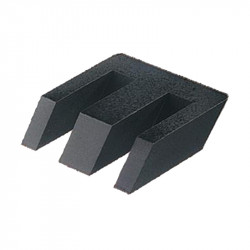

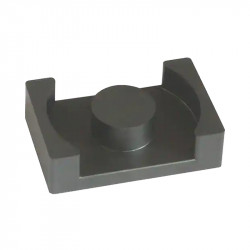
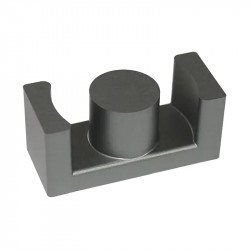
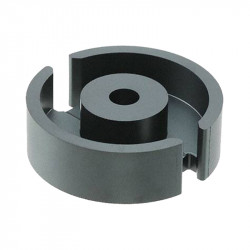
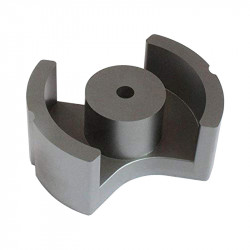
Deja un comentario